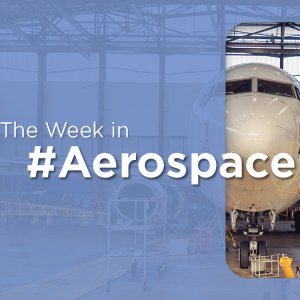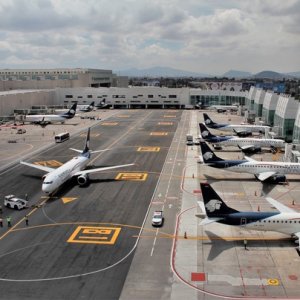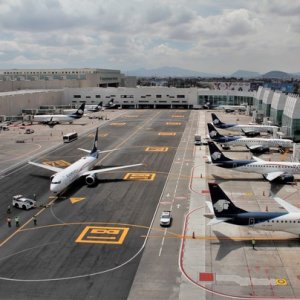Nearshoring Is Here, and So Are the Opportunities

STORY INLINE POST
For a while now, we have been hearing about nearshoring, or reshoring. I wrote about it in this column some time ago. The term started appearing probably around the end of 2019; however, I believe the pandemic somewhat paused the phenomena in Mexico and the North America region. The need to move toward supply chain integration in the region was already there but, to my understanding, because of the uncertainty and economic pressure resulting from the pandemic, everyone became hesitant about moving forward even though they all knew it was a “no brainer.” Although highly needed, it was not the time to invest or move operations around; it was more a time to stabilize and to keep operations running, which was already a big challenge, instead of having to shut down facilities due to the economic downturn. As a result, I was constantly hearing about nearshoring but it was not materializing very quickly.
Time passed and now the reality is very different. I am seeing a lot of companies eager to move to or purchase operations in Mexico as well as trying to develop suppliers here. Everybody was expecting a big recession, which did not happen. The pandemic itself taught us that not having control and proximity over the supply chain is more expensive than developing suppliers in the region. The view was also exacerbated by the war between Russia and Ukraine and the commercial issues with China. Today, nearshoring is materializing, it is happening fast, and it seems that we have officially passed from theory to action.
There are multiple ways in which nearshoring is affecting or impacting many industries in the North American region. In the aerospace sector, there are mainly three ways in which the phenomenon is affecting industry dynamics. First, we are seeing a lot of companies with long-term supply contracts in Asia trying to develop suppliers in Mexico. Some of them are doing it a few years in advance to be ready when contract dates are due. But some others are also doing it in an emergency mode because they do not have other options. The challenge with the development of suppliers in the aerospace industry in Mexico is that it is very difficult to find a supplier that is completely vertically integrated, with the ability to manufacture and assemble a simple component. Usually, what you will find is that to manufacture a component you might need suppliers doing the machining, another supplier to do the chemical or surface treatment and then the assembly of small components or special processes happen on a different shop floor. You will also need to send your components to a different factory along each step of the process. We need to develop integrators in Mexico, or our customers will need to split the contract and become integrators themselves. The alternative to that is to have companies take the role of integrators. It’s a big challenge but also a very big opportunity for whoever is willing to do it. OEMs and other customers from abroad also need to understand this to align their strategies accordingly. Collaboration will be the name of the game to find a joint solution that makes everybody a winner.
The other way nearshoring is getting noticed in Mexico is through operations coming to the nation. Some companies that already have operations locally are either transferring work into Mexico, repurchasing once-divested facilities or operations and still others with no manufacturing presence in the country are actually thinking about opening new greenfield plants or acquiring under-used facilities from other players in the field. All in all, I am sure we will see a substantial growth in capacity and capabilities in the country.
Finally, we are seeing many companies in other industrial sectors, mainly automotive, that want to diversify their contracts or benefit from under-used assets and come into the aerospace industry. My view is that it is not easy, but it is far from impossible. The common phenomena that I have been observing in those companies is that they already have all sorts of quality system certifications, such as ISO 9000, VDA or IATF,, but when you talk to them about having to certify in AS9000 they lose their intent, attention and willingness. The reality is that most of them would easily certify with the right strategic view. As usual, we are traditionally scared of the unknown and we as humans tend to run away from it. Please take my advice: iI you already have manufacturing operations and are interested in integrating into the aerospace supply chain, all you need is a real willingness and focus. Do not be afraid. With the right consultants, you can do it. As I always say: It is hard to get in, but once you are in, it is hard to get kicked out!
In general, if the nearshoring trend is presenting you some opportunities, I want to provide some advice. If you already have an operation in Mexico and want to integrate into the supply chain in aerospace, make sure you find the experts who understand the certification paths, contracting, industry business intelligence, volumes, cycles, and pricing. You should also understand how it can benefit your business and how you would need to integrate your own suppliers and the special processes that are required. If you are already in the aerospace sector outside of Mexico and do not know much about this country, there are plenty of people and formal entities that are willing and eager to help. I can tell you that most of the governments of the states with aerospace activities are always welcoming to these kinds of operations. They will be supportive and will provide good spaces and incentives to make sure that your operation lands in their territory. In that sense, Mexico is very attractive because of all the commercial alliances and agreements that it has with the rest of the world. If you already have an operation in Mexico and are transferring other operations, you have an advantage because you already know how everything works here. Most likely, the reason why you are transferring is not only lower cost but also the benefit of a very innovative labor force and very good efficiency in terms of operations. And if you intend to have some operations in Mexico, there are people who have already done it before. You can contact many of us to gain knowledge or business intelligence to support and make it happen.
Nearshoring is a reality. It is no longer a theory. The question is, how can you benefit from it? The aerospace sector in Mexico will certainly grow and expand because of it. It is not only about having a lower cost supply chain, but also about reliability and control over the supply base, which nowadays is vital. On the other hand, it will be less expensive and easier from a logistics point of view. As a result, you will get lower operational costs, a simplified route for getting components and increased quality standards. State governments, educational entities, FEMIA and important companies already present in the country are ready to provide support and to collaborate. It is here, and, now, we need to honor the opportunity and take the next step in the growth of the aerospace industry in Mexico.























